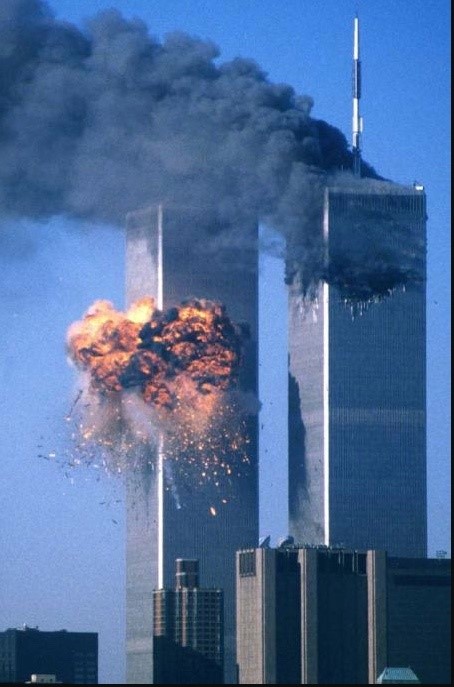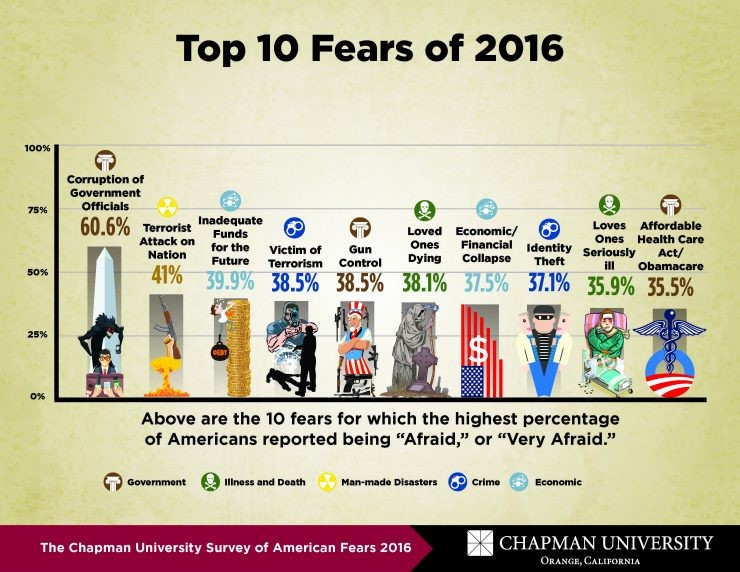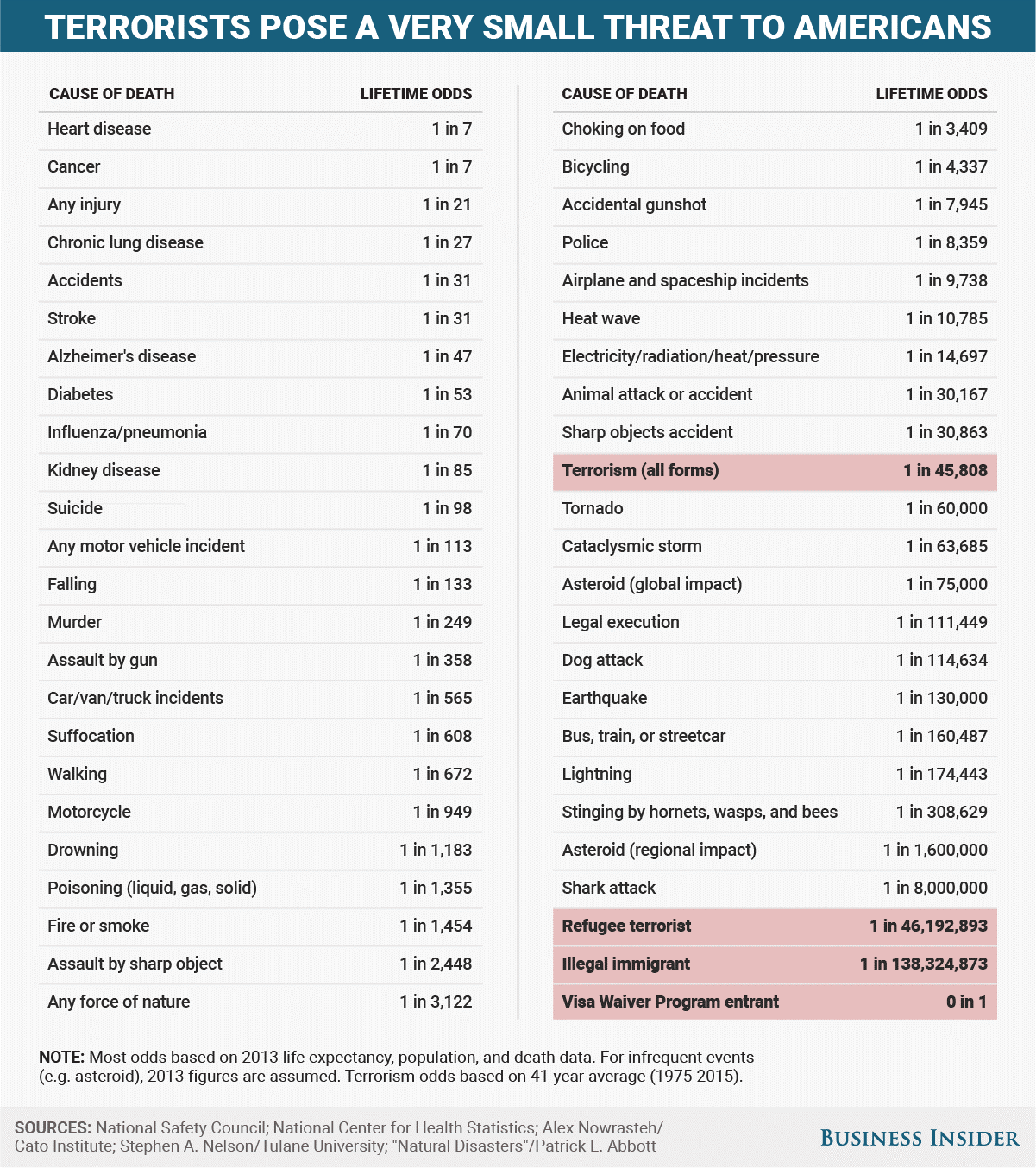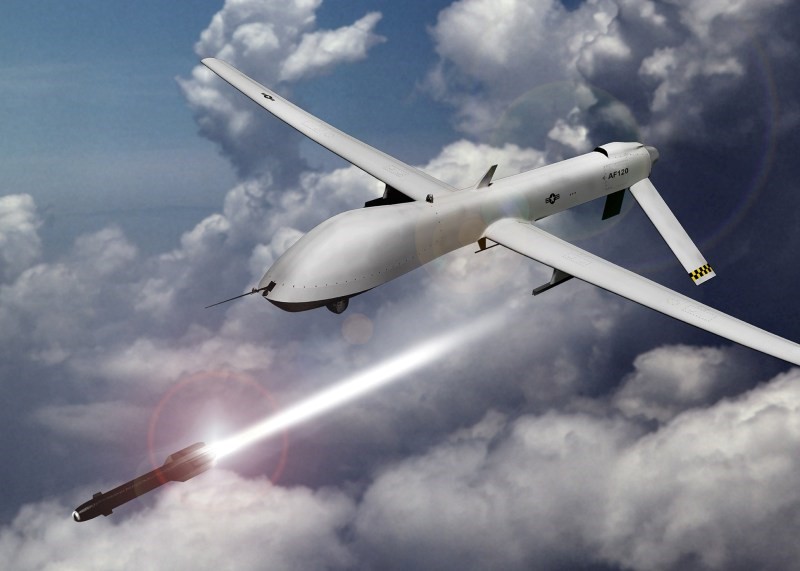Do you remember where you were when this shocking event happened?
I certainly do.
I was in college back then. It was a Tuesday. Just after 9:00pm. I was watching the television when the first live images rolled in.
It immediately became clear to me that I was paying witness to something extraordinary. On the other side of the world, in New York, it was 9:00am. A plane had just crashed into the North Tower of the World Trade Center.
The newscaster’s reporting was breathless and confused. She struggled to make sense of what was happening.
Was this an accident? What kind of plane was it? A small light aircraft? Or a full-sized jet airliner?
I watched as an ugly pillar of smoke billowed from the site of the impact, darkening the sky in the background. My heart was in my throat. My sense of foreboding grew.
Then something else happened — I caught a glimpse of another plane rocketing in from the edge of my television screen.
It was a blur, but this time, there was no mistaking it. It was an airliner, and it slammed into the South Tower, disintegrating in a thunderous ball of fire.
The world changes in an instant

Source: Quora
The newscaster’s voice grew hysterical, and she feverishly stumbled over her words.
I was stunned, transfixed. I stabbed my nails into the palms of my hands. My version of trying to pinch myself to come to terms with the nightmarish reality of what I was seeing.
My mind raced, trying to play catch-up with my eyes. Among my jumbled thoughts was a quotation from Joseph Conrad’s Heart of Darkness.
‘The horror! The horror!’
This was a subconscious reflex on my part. And, in retrospect, maybe it was fitting. Conrad’s novel was a classic meditation on man’s inhumanity to man. The eerie parallels were there, even if I couldn’t possibly grasp it at the time.
The age of terror
Almost 3000 Americans perished on 9/11. This was a total event. Seismic. Traumatic. And the vengeance that emerged from the rubble continues to be a source of great controversy to this day.
Consider the raw numbers. It only cost Al-Qaeda operatives around $500,000 to plan and execute 9/11. By comparison, the War on Terror has cost America $6 trillion so far. The human cost is sobering. Half-a-million lives lost in the conflict zones of Afghanistan, Iraq, and Pakistan. A higher body count if you decide to include figures from other ‘secret wars’ conducted in Somalia and Yemen.
On the home front, we’ve also seen our pattern of life change as the military-intelligence bureaucracy has been ramped up. Systems of mass surveillance have been put into place. Far-reaching powers of detention and rendition have been signed off. And in airports everywhere, body scanners and pat-downs have become a daily reality.
Is this outcome excessive? Disproportionate? True believers will dismiss any suggestion of that. They frame their response by going for the emotional jugular: ‘You saw what happened on 9/11. They are coming to kill us all. We have to do whatever it takes to stop them.’
Terror becomes an existential threat
This argument is an absolutist one, and it hits you straight in the gut. The existential threat is surely coming. Within days? Hours? Minutes? How far would you go to protect your life, your family, and your country?
Well, the answer is plain and simple: you do whatever it takes.
Relentless news coverage, as well as persuasive dramas like Homeland and 24, have ingrained this dynamic in our popular consciousness. There’s always a ticking clock. There’s always a tightening of the screws.
It’s no wonder that terror appears prominently on the Chapman University Survey of American Fears. This threat occupies not just one but two spots on the Top 10 list:

It’s clear that our collective anxiety over terror cuts deep. But is the actual threat itself as immediate as we think it is?
Your chances of dying from terror actually ranks way below other riskier activities like walking, riding your bike, or even choking on your food:

Risk versus reality
Andrew Shaver, a Pentagon analyst, probes deeper into our skewed perception of risk:
Consider, for instance, that since the attacks of Sept. 11, 2001, Americans have been no more likely to die at the hands of terrorists than being crushed to death by unstable televisions and furniture. Meanwhile, in the time it has taken you to read until this point, at least one American has died from a heart attack. Within the hour, a fellow citizen will have died from skin cancer. Roughly five minutes after that, a military veteran will commit suicide.
And by the time you turn the lights off to sleep this evening, somewhere around 100 Americans will have died throughout the day in vehicular accidents – the equivalent of “a plane full of people crashing, killing everyone on board, every single day.” Daniel Kahneman, professor emeritus at Princeton University, has observed that “[e]ven in countries that have been targets of intensive terror campaigns, such as Israel, the weekly number of casualties almost never [comes] close to the number of traffic deaths.”
When we miscalculate risks, we sometimes behave in ways that are riskier than those we are trying to avoid. For instance, in the months following the 9/11 terrorist attacks, millions of Americans elected not to fly. A significant proportion decided to drive to their destinations instead. Driving is more dangerous than flying. And so one scholar of risk, Gerd Gigerenzer, calculated that more people died from the resulting automobile accidents than the total number of individuals who were killed aboard the four hijacked planes Sept. 11.
Shaver makes a good point. Fear is a great motivator. It propels us to do things we otherwise wouldn’t.
Security that doesn’t offer security
Bruce Schneier, an analyst from Harvard Law School, goes one step further. He talks about the rise of ‘security theatre’ — public policy designed to provide superficial comfort, but actually do very little to address fundamental issues of governance.
He gives some real-world examples here:
- Having airport security confiscate liquids, when a terrorist can just as easily cause damage with solids.
- Not allowing bottled water on flights due to volume check, but allowing flammable aftershave.
- High-tech-looking body scanners that don’t perform any better than traditional ones.
- Providing security guards with guns that are loaded with blanks.
- Surveillance cameras with such low-quality image capability that they can’t actually capture anything.
- Telling people to report all suspicious activity, which does little but increase fear and helplessness and make us suspicious of each other.
- Enforcing building security with ID badges that a criminal can easily copy.
- Marking homes and cars with stickers that announce protection by a video surveillance or advanced anti-theft system.
Appearances are often deceiving, aren’t they? What you see isn’t always what you get.
Fuzzy distinctions
Your political affiliation has often been used by the mainstream media as an indicator of whether you’re a hawk or a dove. It comes down to whether you might be willing to support extreme security measures or not.
In the aftermath of 9/11, this distinction seemed pretty obvious. Conservatives appeared to be more militaristic and willing to give their governments the ability to ‘protect’ them from terror. Meanwhile, liberals appeared to be more sceptical about the erosion of human rights.
But as time marched on, this distinction seemed to get fuzzier and fuzzier until it melted away completely. Forget bleeding-heart rhetoric. When push comes to shove, liberal leaders have proven themselves to be at least as deadly as their conservative counterparts when it comes to embracing extreme security measures.
Case in point: Barack Obama. He entered office by promoting the politics of hope. But, in my opinion, under his idealistic exterior lies a more troubling record — a man who has behaved in cynical ways that have often betrayed his public image.

Source: SOFREP
Stopping terror at all costs
Terror Tuesdays were a hallmark of Obama’s presidency. Here’s how it works. Every Tuesday, Obama would sit down with his security advisers to finalise what is known as the Disposition Matrix. In plain English, this is a ‘kill list’. A catalogue of global targets who must die that week.
Acting as judge, jury, and executioner, Obama would go over the proposed names before giving the green light. In this manner, he ended up launching 10 times more drone strikes during his presidency compared to George W. Bush.
Obama’s kinetic action has often been shrouded in mystery and discrepancy.
In one particular strike in Yemen — a country America was not officially at war with — he reportedly wiped out 14 women and 21 children. They were conveniently labelled as EKIA. Enemy killed in action.
In another instance, Obama blew away Anwar al-Awlaki and his son, Abdulrahman. This was an even more significant milestone — because these two unlucky souls happened to be American citizens in Yemen. Denied the usual due process.
The dark side
Why on earth was Obama so trigger-happy? Why was he so keen to bypass the American Constitution? And why did he persecute anyone who disagreed with him so harshly?
There’s a psychological concept known as ‘force drift’. Navy General Counsel Alberto Mora first observed it when he examined the torture scandals of Abu Ghraib and Guantanamo during the Bush era.
It goes like this. You badly want to make a detainee talk. So you start using force during enhanced interrogation. And if a bit of force is good at first, then more is even better. And soon enough, you experience a ‘drift’. More and more violence is applied until you’ve crossed the line. You have lost your sense of proportion. You have lost your sense of morality.
Dick Cheney, one of the key architects of the War on Terror, offered justification for this:
We also have to work, though, sort of the dark side, if you will. We’ve got to spend time in the shadows in the intelligence world. A lot of what needs to be done here will have to be done quietly, without any discussion, using sources and methods that are available to our intelligence agencies, if we’re going to be successful. That’s the world these folks operate in, and so it’s going to be vital for us to use any means at our disposal, basically, to achieve our objective.
Is this what happened to Obama? Did he start embracing the dark side that Cheney talked about? Was he swayed by force drift?
Behaving like an emperor
Don’t bother asking Obama’s progressive supporters. They are still enamoured that he won the Nobel Peace Prize. They appear willing to give him a free pass.
Don’t ask his conservative opponents either. They seem content to smear him with schoolyard insults like ‘socialist’ or ‘closet Muslim’, while leaving his damning war record unchallenged. Perhaps, behind closed doors, they must privately concede that Obama was a more effective killer than Bush ever was.
Peter Van Buren, a 30-year veteran of the State Department, is a Washington Beltway insider who’s gone public with a scathing indictment:
White is black and down is up. Leaks that favor the president are shoveled out regardless of national security, while national security is twisted to pummel leaks that do not favor him. Watching their boss, bureaucrats act on their own, freelancing the punishment of whistleblowers, knowing their retaliatory actions will be condoned.
The United States rains Hellfire missiles down on its enemies, with the president alone sitting in judgment of who will live and who will die by his hand.
What lies at the nexus of Obama’s targeted drone killings, his self-serving leaks, and his aggressive prosecution of whistleblowers is a president who believes himself above the law, and seems convinced that he alone has a preternatural ability to determine right from wrong.
The Obama doctrine?
People often accuse Donald Trump of being a wannabe tyrant and flaunting political convention. That may well be true. But what most don’t realise is that it was Obama himself who started this disturbing trend of concentrating power and disregarding the rule of law.
Perhaps it was small and imperceptible at first, but over time, it’s certainly gained momentum.
The narrow belief that one man and one man alone should wield supreme authority to get things done. Like an emperor.
And why not? The existential threat is out there, isn’t it? Why shouldn’t a leader act swiftly and decisively to protect his people?
Authoritarianism is compelling when you frame it a certain way. Gosh, it even becomes addictive.
Terror 2.0
Today, we have a new danger engulfing us. It’s another foreign enemy we can’t quite see. And once more, it promises to annihilate our way of life.
So we respond in the only way we know how. By using the language of war. By increasing mass surveillance. And by bombarding the media with continuous coverage.
It’s a different symphony. But, broadly speaking, the same tune.

Source: Pixabay
Strangely enough, in a reversal of 9/11, we now have conservatives talking about human rights, while liberals seem more willing to embrace authoritarianism.
It’s bizarre. It stretches incredulity. And I’m reminded of what a friend once said: ‘You know what the difference is between fiction and real life? Well, fiction has to make sense.’
The irony of this isn’t lost on me. Indeed, it does feel like we’re living in a time and a place ripped straight from an apocalyptic video game.
I can’t help but shake my head when I hear conservatives complain about their civil liberties being violated. I’m sorry, but tough luck. You gave all that up when you agreed to set up an intrusive security state to fight the War on Terror.
I also shake my head when I see liberals get hysterical about the COVID-19 pandemic. Are you sure you’re not being hypocritical? Are you sure you’re not veering close to the authoritarianism you once accused conservatives of promoting?
It’s obvious. Followers of political dogma are ready and willing to use a metaphorical chainsaw to kill a metaphorical mosquito. But how far, exactly, is too far? Shall we progress to using a tank to kill a mosquito? Or perhaps a nuclear warhead is a more attractive option? Just to be sure that the mosquito is truly dead?
The only easy day was yesterday
It’s important to note we never quite returned to normal after 9/11. The Al-Qaeda threat morphed into the ISIS threat. The danger of Islamist guerrillas morphed into Islamist lone wolves. And on and on it went, magnifying our worries at every turn.
In the documentary Dirty Wars, a battle-weary American soldier made a very telling observation:
We have created one hell of a hammer. And for the rest of our generation…this force will be continually searching for a nail.
He was talking cynically about the War on Terror, but he might as well have been talking about the War on Corona.
For better or for worse, we have injected a new vocabulary of fear into our daily lives.
Chinese virus. Wuhan virus. Man-made virus…
Social distancing. Quarantine lockdowns. Contact tracing. Flattening the curve…
All this seemed unthinkable months ago, but now feels inevitable. It’s a paranoid reality we’re facing, and there seems to be no easy way out of it.
What a tangled web we’ve wrapped ourselves in. A tangled web of our own making. And we’re tightening the knots with each passing day.
There is no doubt in my mind that COVID-19 is a legitimate threat — just as terrorism was. But in trying to fix this problem, are we actually creating another disease? Are we opening ourselves up to another round of racism, xenophobia, and ultranationalism?
Regards,
John Ling
Contributor, WealthMorning.com





John is the Chief Investment Officer at Wealth Morning. His responsibilities include trading, client service, and compliance. He is an experienced investor and portfolio manager, trading both on his own account and assisting with high net-worth clients. In addition to contributing financial and geopolitical articles to this site, John is a bestselling author in his own right. His international thrillers have appeared on the USA Today and Amazon bestseller lists.